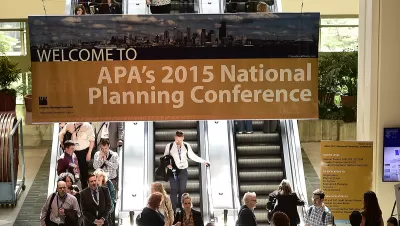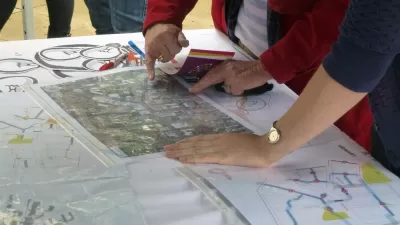Former L.A. City Councilmember and retiring Cal Poly College of Environmental Design Dean Michael Woo reminds readers of the visionary responsibilities of elected officials to ensure the plans of today indeed consider the needs of tomorrow.

The Planning Report sat down with Michael Woo, retiring dean of the Cal Poly Pomona College of Environmental Design (ENV) and a former Los Angeles City Councilmember and city planning commissioner, to discuss the skills valued in city planning departments today and to revisit the perennial question of whom planners should be planning for.
Demonstrating the practical value of pursuing the profession, ENV recently released a report, "Design for the Future: ENV Jobs in a Transforming Jobs Market" that projects new design-related job opportunities coming on line in Southern California over the next five years. To the former point, Woo reminds readers of the visionary responsibilities of elected officials to ensure the plans of today indeed consider the needs of tomorrow, commenting:
"Professional planners frequently feel constrained about becoming advocates for policy change, especially if they are planners working in the local discretionary approval process. If a planner is a public employee involved in what the lawyers call a 'quasi-judicial' process, then he or she is expected to be an impartial interpreter of zoning ordinances or plans. Unless the local elected officials in a jurisdiction are unabashed advocates for changes in housing policy, it could be dangerous for a planner to get into the habit of sticking his or her neck out.
On the other hand, planners may have useful knowledge or experience relevant to our current housing problems. Therefore, if professional planners want to be relevant to the housing debate, they may have to get out of the conventional roles in a planning agency and bring their expertise to a different role or setting in which they can use their knowledge to fight for housing. At the municipal level, this could mean going to work for a mayor or a councilmember who cares about housing issues and is willing to take some risks. It could mean going into the nonprofit affordable housing sector or finding a spot in the for-profit world in which profit and an affordable housing product are compatible. Or you can go into the media or academia (like me) and try to influence the opinions of others"
Read the full interview on The Planning Report.
FULL STORY: Michael Woo—CalPoly's Planning School Dean—on Why's and Wherefore's of City Planning

Alabama: Trump Terminates Settlements for Black Communities Harmed By Raw Sewage
Trump deemed the landmark civil rights agreement “illegal DEI and environmental justice policy.”

Planetizen Federal Action Tracker
A weekly monitor of how Trump’s orders and actions are impacting planners and planning in America.

The 120 Year Old Tiny Home Villages That Sheltered San Francisco’s Earthquake Refugees
More than a century ago, San Francisco mobilized to house thousands of residents displaced by the 1906 earthquake. Could their strategy offer a model for the present?

In Both Crashes and Crime, Public Transportation is Far Safer than Driving
Contrary to popular assumptions, public transportation has far lower crash and crime rates than automobile travel. For safer communities, improve and encourage transit travel.

Report: Zoning Reforms Should Complement Nashville’s Ambitious Transit Plan
Without reform, restrictive zoning codes will limit the impact of the city’s planned transit expansion and could exclude some of the residents who depend on transit the most.

Judge Orders Release of Frozen IRA, IIJA Funding
The decision is a victory for environmental groups who charged that freezing funds for critical infrastructure and disaster response programs caused “real and irreparable harm” to communities.
Urban Design for Planners 1: Software Tools
This six-course series explores essential urban design concepts using open source software and equips planners with the tools they need to participate fully in the urban design process.
Planning for Universal Design
Learn the tools for implementing Universal Design in planning regulations.
Clanton & Associates, Inc.
Jessamine County Fiscal Court
Institute for Housing and Urban Development Studies (IHS)
City of Grandview
Harvard GSD Executive Education
Toledo-Lucas County Plan Commissions
Salt Lake City
NYU Wagner Graduate School of Public Service





























